Overseas
Wellington Wine Walk: Trip Report and Photo Gallery
In 2013, we finally managed to include a walk from winery to winery on one of our South Africa trips. The Wellington Wine Walk was so good, we hope to be able to do it again. This page is the story of that walk.
Hold your cursor over any photo to see a caption; click to see a larger photo.
Day 1
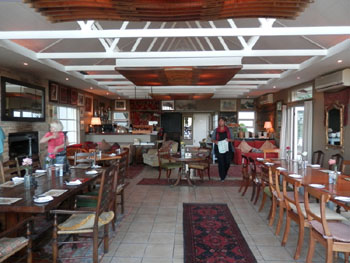
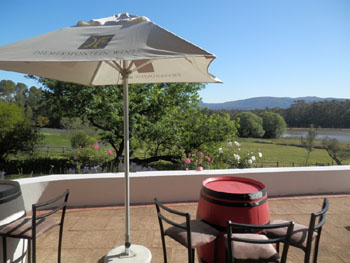
We left Cape town in the afternoon and drove to Wellington and our first winery, Diemersfontein, where we met the rest of the group, had our first wine tasting, first gourmet dinner and excellent accommodation.
Our group consisted of Russell, Tony and Dorothy from Australia; Tony and May, an American couple who spend part of the year in South Africa; Anne and Yvette from Botswana; Karen and Kirsten from a small town near Durban; and guides, Cara, Miranda, Jeanetta and Elaine. (We were always accompanied by two guides but which guides changed over the course of the trip.)
Day 2
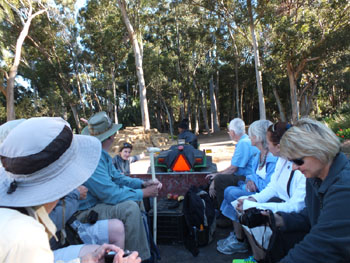
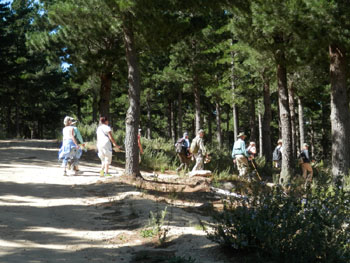
After a hearty breakfast (most South African B&Bs give you a magnificent breakfast), we packed the gear we wanted during the walk and left the rest of our things in our cars. The walk gear was taken to our next accommodation while we piled onto a trailer which was towed behind a tractor to the start of our first walk.
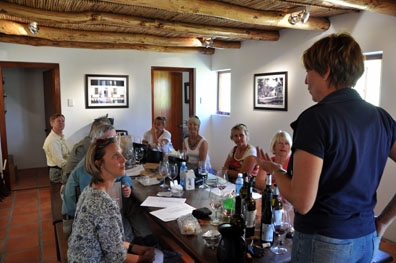
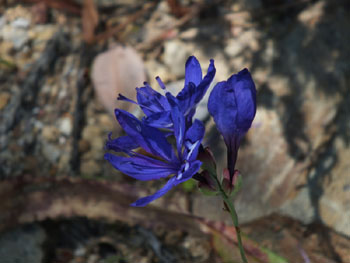
One of the nice things about a trip like this is that you are never hurried. there is always time to stop and have a look at the flowers, birds or whatever. Our guides were a wonderful source of information about all sorts of things. The wildflower at right is one of many we saw along the way.
We stopped for lunch and a wine tasting at Druk My Niet. It's run by a German couple who had lived in various places around the world before deciding that they'd like to make wine and settled on South Africa as the place to do it. Their wines were excellent — and inexpensive, beginning at A$3 and up to A$20 with a single exception at A$30. good wine in South Africa gives you excellent value for your money.
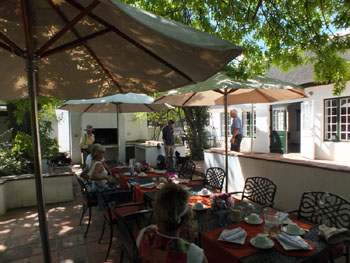
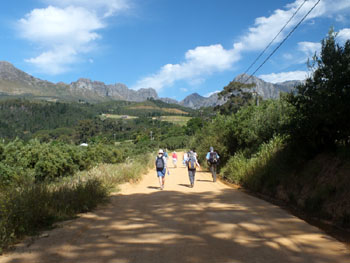
We got a bit of history just after lunch as a short walk took us to another place which was actually where the movement to make Afrikaans a formal language began. There was a small monument nearby. At the estate, where we had a lovely afternoon tea, we saw the original printing press where they produced the first newspaper and first bible in Afrikaans.
Also interesting was a small cemetery, officially a national monument, where some of the very earliest white settlers were buried. Interestingly, the cemetery includes the grave of one or more freed slaves who had chosen to stay with their former masters. They received the privilege of being buried with them, but their grave(s) face in the opposite direction as they weren't considered to be Christian.
Afternoon tea finished, it was back onto the track as we headed for our final destination of the day. Most of the walking was on dirt or gravel tracks which we rarely has to share with any kind of motor vehicle.
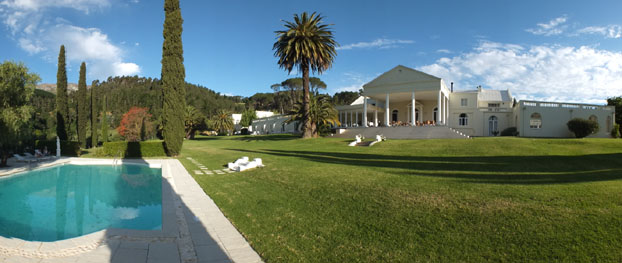
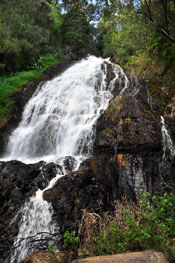
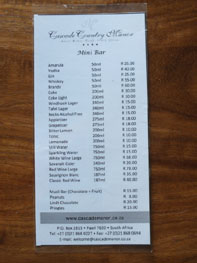
Our destination for the evening was Cascade Manor, where, for something different, we had an olive oil tasting.
Cascade Manor was more than a little bit impressive. It's beautiful, luxurious and not unreasonably priced. The mini bar will sell you a beer for R15, less than A$2. (The exchange rate was about 9 rand per Australian dollar at the time we did this trip. if you can't read the menu, click to enlarge it. for an Australian, the prices are almost unbelievable.) If the grounds were not enough, a 200 metre walk takes you to a lovely waterfall.
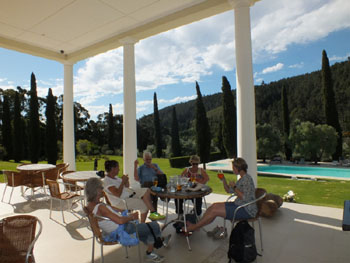
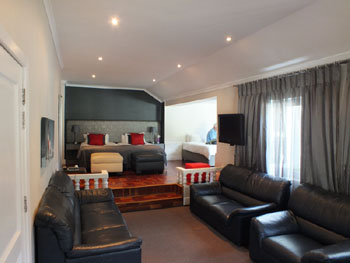
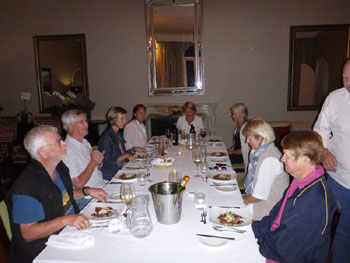
The three photos here give you an idea what our afternoon and evenings were like. All the accommodation was of a similar standard.
Day 3
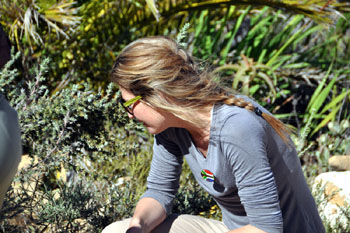
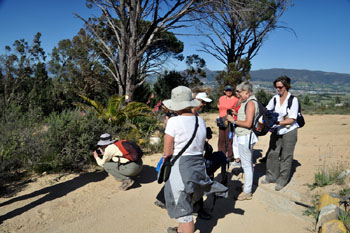
Day 3 had the most variety with stops at a biodynamic farm, a farm which, among other things, produces buchu oil, and another winery.
Two 4WDs took us to where we'd had the wine tasting the day before and we left from there. The day's walking was pleasant enough, great views of the surrounding mountains, a bit of up and down, some eucalypt forest which had been harvested at least once and allowed to regrow from the stumps. Early on we came across a wild tortoise among the flowers.

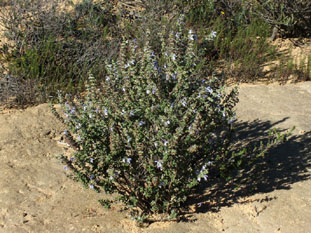
Much of our walking was in the hills which gave us some great panoramic views.
The guides told us that the wild sage was used by the early settlers in South Africa to treat stomach troubles, including colic, diarrhoea, flatulence, heartburn, gripes and indigestion. The whole walk was full of interesting bits of information like this.
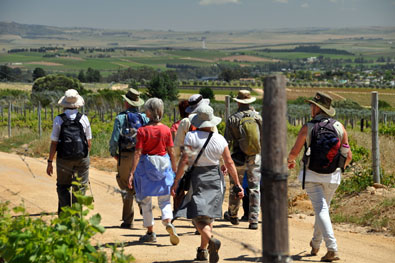
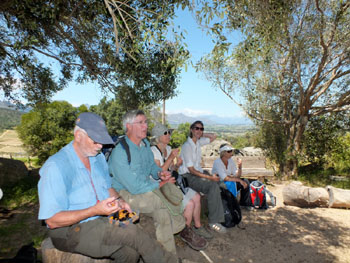
We had morning tea on a hill with a woman from the farm that produces buchu oil. Only two species of buchu are grown commercially. The leaves are picked and steamed to release the oil, most of which is sent to France for use in the perfume industry. The UK and Germany are the next two biggest markets. Like tea tree, it's very strong and can't be stored in plastic.
In addition to producing buchu oil, she produces wonderful pinotage jams and relishes.
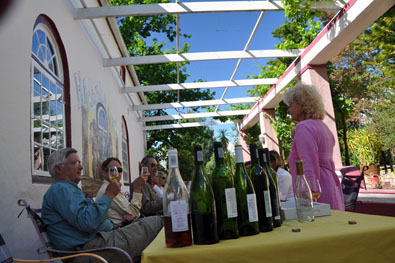
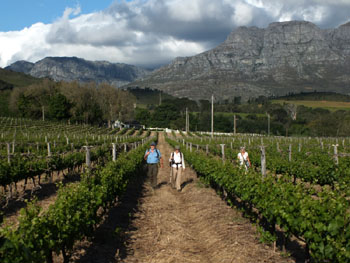
Our lunch stop was at Hildenbrand, run by Renni Hildenbrand, a German woman who set herself up as a wine maker 20+ years ago. The local farmers would have nothing to do with her at the start. Then, her first vintage won a major prize and she hasn't looked back since. The food we got was excellent. Renni was a good story teller and entertained us for some hours. A good plus is that she doesn't use fining agents to settle the wine. The normal fining agents are all animal based so her wine is one of the few that is vegan friendly.
As happened many times on the trip, our afternoon walk took us through a vineyard.
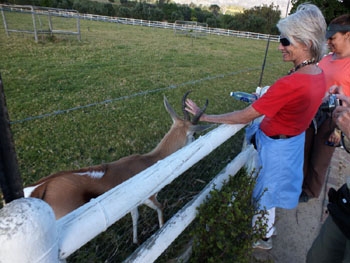
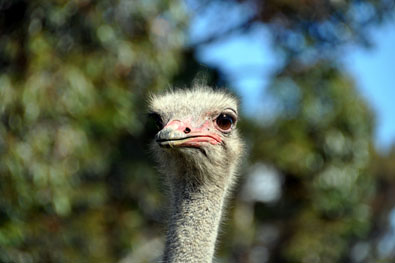
Many places in South Africa make a place for the native wildlife as well as the normal domestic animals. Our afternoon walk gave us a chance to get close to some of them.
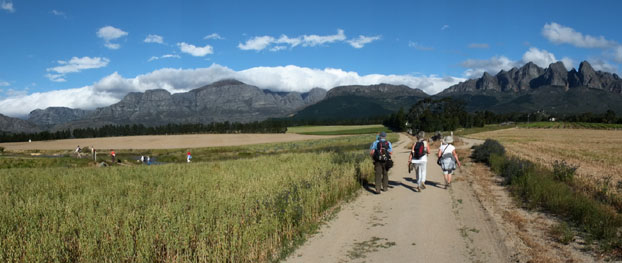
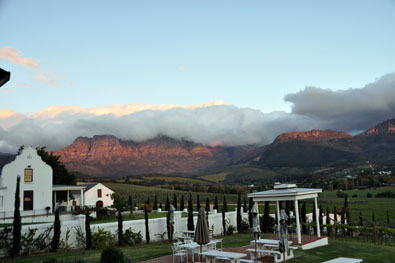
From Renni's Hildenbrand Estate, we walked on for the better part of two hours to get to Val du Charron, yet another great spot. And yet another great meal and yet more wine tasting. They gave us the bottles we'd tasted so we didn't even have to buy wine with dinner.
Day 4
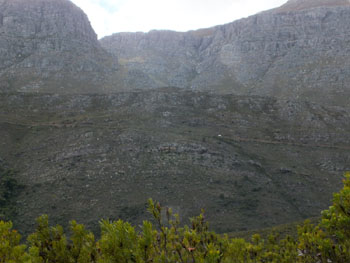
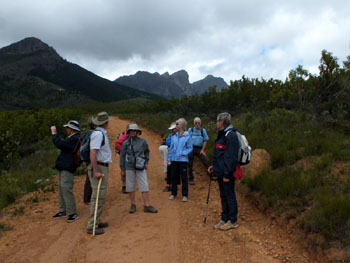
It was a somewhat grey and drizzly morning when we were driven part way up Bainskloof Pass, dropped off and began a longish trek downhill through fynbos. The owners got far more land than they had originally intended so they decided to leave the top part as native bush.
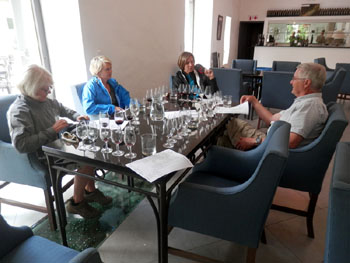
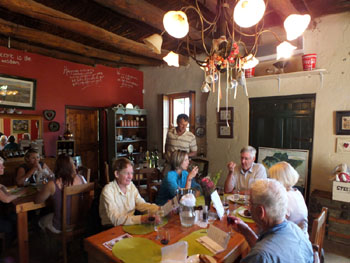
From fynbos, we got back into grape country, close to the mountains in a microclimate that permits growing cool climate grapes. We stopped for morning tea and a wine tasting at Doolhof. It's an old firm, established in 1712 but relatively new (mid 2000s) to the wine business. We saw a number of baboons on the way up to the start of the walk and a few more as we were approaching the farm.
We continued our walk to Welvanpas. Wine maker is Dan Retief, a multi generation descendent of the famous Piet Retief family. He told the tale of Piet Retief in what I thought was an interesting way. He does a small quantity of wines and has a nice café. Food, snook pie (fish) was quite tasty. I think we'd had something like ten wines, five at each place by the time we left. Dan was in a bad accident some time back and nearly killed, so badly injured that he had to be taught to walk and talk again. Married his nurse. That too is a good story.
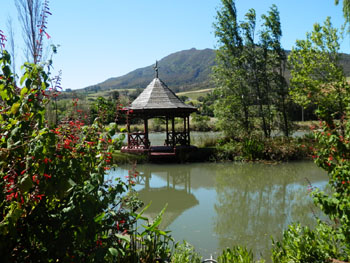
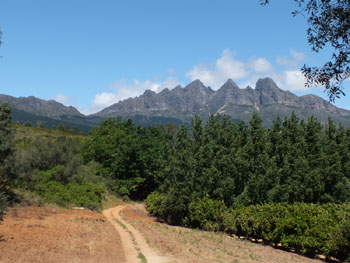
Shortly after leaving Welvanpas, we walked through an orange orchard. From there we continued to a beautiful award-winning garden.
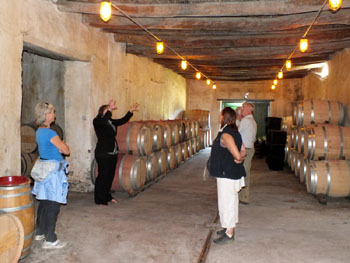
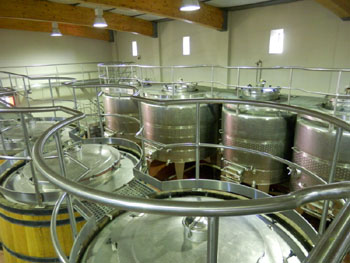
From the garden, we were driven to our final tasting at Bosman. They had a small museum which had some of the very old wine making gear. They had been in the wine business in the very early days, then dropped out for many years to concentrate on selling grafted vines to the local farmers (they remain a major source of grafted vines for all of South Africa). They only recently went back to the trade — one of their chenin blanc vineyards was planted in 1952 and still producing, the third oldest producing vines in South Africa. Also worth noting is that the workers actually own a share of the estate.
From the Bosman winery, we were driven back to our vehicles at Diemersfontein. the tour was officially over but seven of us had opted to add a final night. We were very glad we were among those who had chosen to do so.
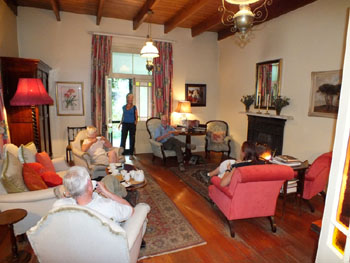
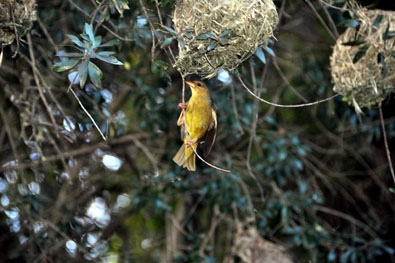
Elaine, one of the guides, and her husband led the way to Bartholomeus Klip, an old farmhouse which has been converted into some wonderful upmarket accommodation. Weaver birds nesting in the garden added a nice touch.
Day 5
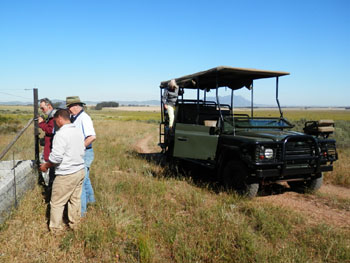
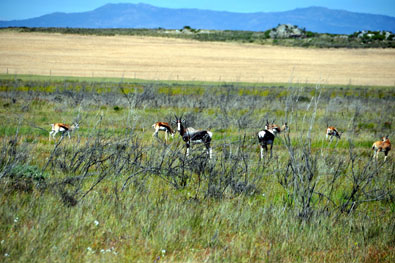
Tea and pastries were available from 7. There was a free game drive — the property is about 20,000 hectares and backs onto government land, nature reserve or similar. The drive left a bit past 8 am in an open land rover. It went until a bit past 10. A big fire two years earlier had destroyed a lot of vegetation and killed many tortoises so they are doing a special breeding program to keep the hatchlings from falling prey to things like crows in an attempt to repopulate their reserve.
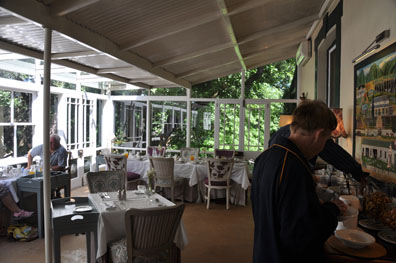
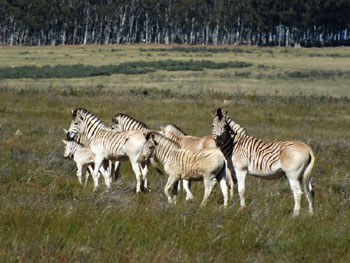
The game drive guide pointed out some interesting plants in the early part of the trip — we didn't see much else. On the way back, we hit the jackpot: a blue crane, ostriches, springbok, gemsbok, quagga (a subspecies of the plains zebra which they are trying to breed back —: whether or not they are really quagga remains an open question), a mountain zebra (distinct species), bontebok, red hartebeest. They have remote cameras which have recorded leopards.
The drive was followed by a very nice and very large brunch. After that we bid farewell to our fellow wine walkers as we all headed in different directions.
A final note. The Wellington Wine Walk has two different routes to cater for people who would like to enjoy two similar walks. The actual accommodation and wineries visited may change from time to time depending on circumstances. At the time we did the walk, we got about nine South African rand per Australian dollar which made the total cost a bit under A$700 per person.
Willis's Walkabouts, 12 Carrington Street, Millner NT 0810, Australia walkabout@bushwalkingholidays.com.au
Last Modified Tuesday, 25-Feb-2020 08:21:28 EST | Valid XHTML1.0
 share
share